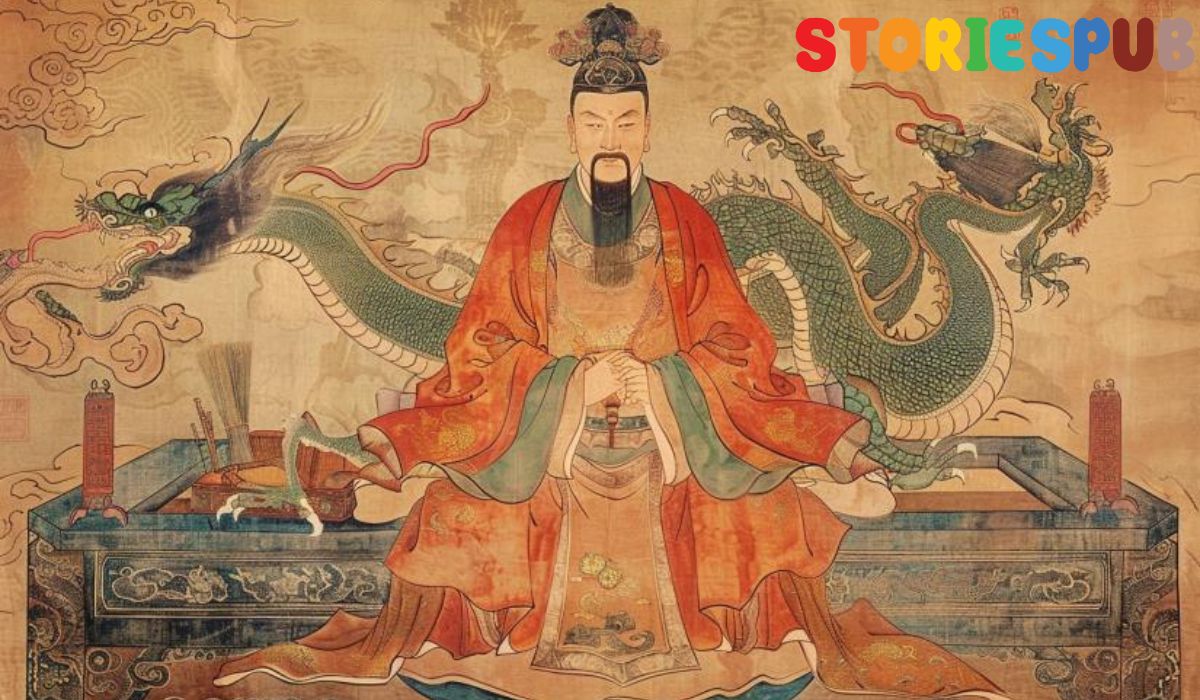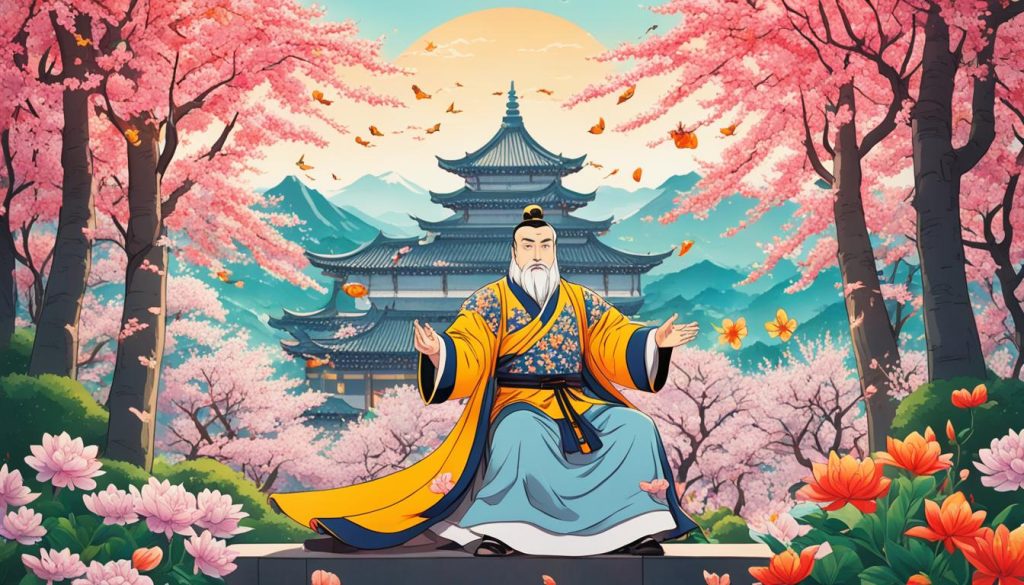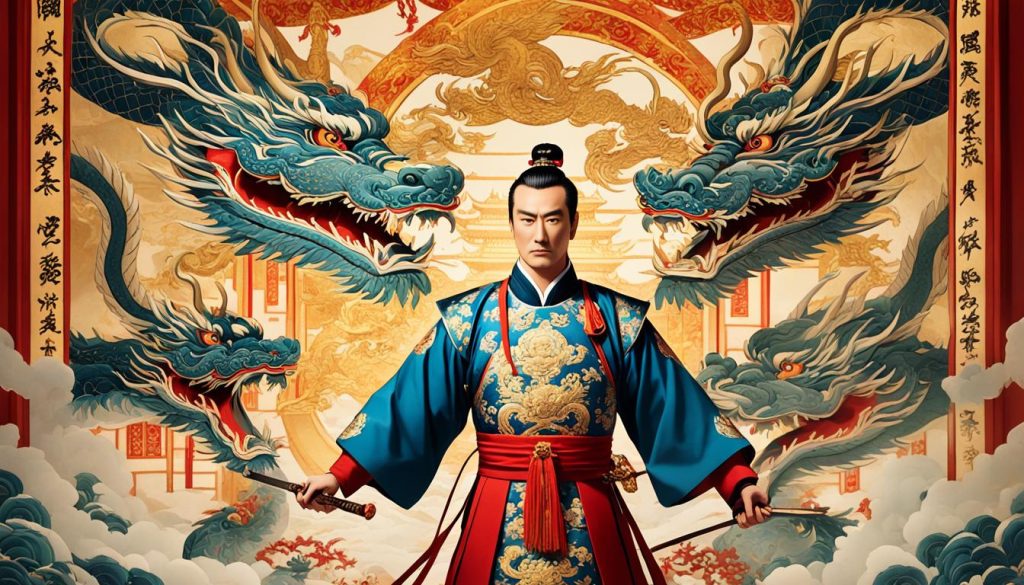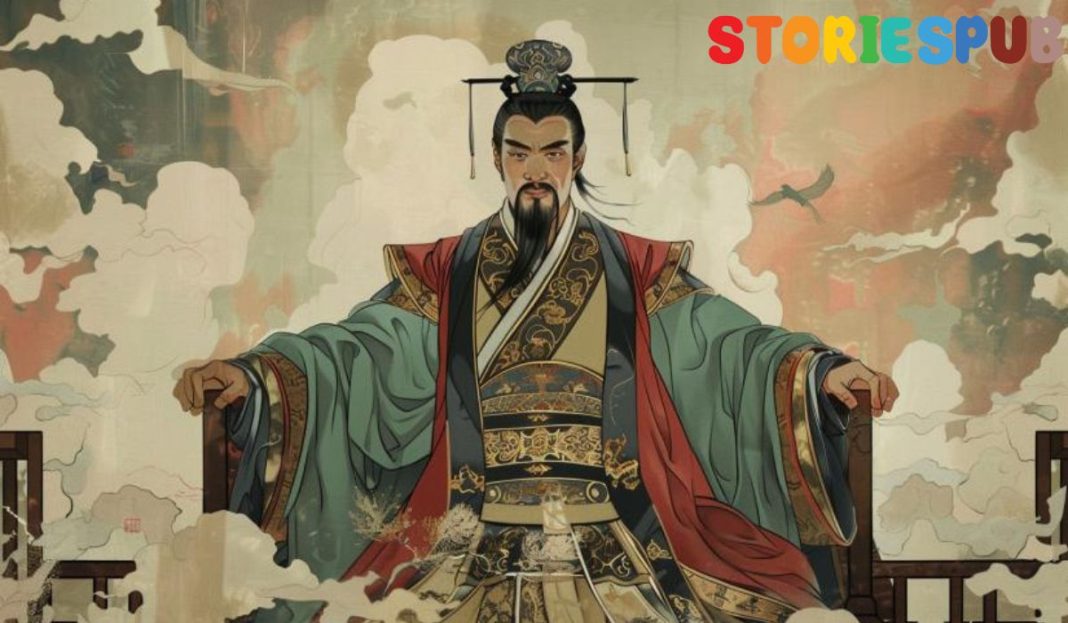 Emperor Tang Taizong, also known as Li Shimin, was the second emperor of the Tang Dynasty in China. His reign, which spanned from 626 to 649, is considered a golden age in Chinese history. Tang Taizong played a pivotal role in shaping the prosperity and success of the Tang Dynasty, leaving a lasting impact on Chinese governance, military prowess, and cultural development.
During his rule, Emperor Tang Taizong led the Tang Dynasty to unprecedented economic and military achievements, expanding the empire’s territories and fostering peace and prosperity. His leadership and vision set the benchmark for future emperors, influencing the trajectory of Chinese history. Let us delve into the life, achievements, and cultural contributions of Emperor Tang Taizong, a ruler whose legacy endures to this day.
Emperor Tang Taizong, also known as Li Shimin, was the second emperor of the Tang Dynasty in China. His reign, which spanned from 626 to 649, is considered a golden age in Chinese history. Tang Taizong played a pivotal role in shaping the prosperity and success of the Tang Dynasty, leaving a lasting impact on Chinese governance, military prowess, and cultural development.
During his rule, Emperor Tang Taizong led the Tang Dynasty to unprecedented economic and military achievements, expanding the empire’s territories and fostering peace and prosperity. His leadership and vision set the benchmark for future emperors, influencing the trajectory of Chinese history. Let us delve into the life, achievements, and cultural contributions of Emperor Tang Taizong, a ruler whose legacy endures to this day.
Key Takeaways:
- Emperor Tang Taizong was the second emperor of the Tang Dynasty, ruling from 626 to 649.
- His reign is considered a golden age in Chinese history, marked by economic prosperity and military expansion.
- Tang Taizong’s leadership and reforms set the foundation for the Tang Dynasty’s success and enduring influence.
- He implemented significant government reforms, establishing a merit-based bureaucratic system.
- Emperor Tang Taizong was a patron of the arts and contributed to the flourishing of Chinese culture during the Tang Dynasty.
Early Life and Rise to Power
Emperor Tang Taizong, originally known as Li Shimin, was the son of Emperor Gaozu, the founder of the Tang Dynasty. His early life was marked by a tumultuous period in China’s history, as the Sui Dynasty crumbled due to widespread rebellion and political unrest. Taizong played a significant role alongside his father in the rebellion against the Sui Dynasty, which ultimately led to the establishment of the Tang Dynasty. Despite being initially overlooked for succession, Taizong’s military acumen and popularity among the people propelled him forward. His strategic brilliance and leadership skills gained him the trust and support of many, both within the ranks of the military and among the general populace. It was through these qualities and the loyalty of his supporters that Taizong was able to seize the throne in a well-executed coup, becoming the second emperor of the Tang Dynasty. The rebellion against the Sui Dynasty was a turning point in Chinese history, and Taizong’s significant contributions to the cause solidified his position as a central figure in the establishment of the Tang Dynasty. His rise to power not only showcased his military prowess but also demonstrated his ability to navigate complex political landscapes.Achievements and Legacy
Emperor Tang Taizong, also known as Li Shimin, left an indelible mark on Chinese history with his remarkable achievements and legacy as a great ruler. His reign during the Tang Dynasty is often referred to as the “Reign of Zhenguan,” which is widely regarded as a golden age in Chinese history. During his reign, Emperor Tang Taizong implemented substantial reforms that significantly contributed to the prosperity and growth of the Tang Dynasty. He focused on improving the government and law systems, solidifying imperial protection over Chinese regions, expanding the empire’s territories, and promoting economic and cultural development. Emperor Tang Taizong’s reign set a benchmark for future emperors in terms of governance and leadership. His accomplishments not only established the Tang Dynasty as one of the most prosperous and influential dynasties in Chinese history but also shaped the course of the nation for centuries to come. Under Emperor Tang Taizong’s rule, the Tang Dynasty experienced a period of unprecedented economic and cultural growth. The empire thrived as a center of trade and commerce, attracting merchants from across the Silk Road and fostering international relations with neighboring countries.One of Emperor Tang Taizong’s significant achievements was the implementation of reforms in government and law. He established a merit-based bureaucracy, where officials were appointed based on their abilities rather than their social status. This system increased efficiency and fairness in the administration, ensuring talented individuals occupied key positions within the government. Furthermore, Emperor Tang Taizong expanded the empire’s territories through successful military campaigns. He defeated the Eastern Turks and other opponents, extending the reach of Tang China across East and Central Asia. His diplomatic skills were also evident, as he signed peace treaties with Tibet and fostered religious tolerance, allowing the practice of various faiths in China. Emperor Tang Taizong’s reign also witnessed a cultural revolution, with Buddhism gaining prominence as a popular religion. Tang China became known for its vibrant poetry, painting, music, and dance, attracting talented artists and intellectuals. It was during this period that renowned poets such as Li Bai and Du Fu emerged, leaving a lasting legacy in Chinese literature. Emperor Tang Taizong’s achievements and influence surpassed his time on the throne, as his reign became a model for future emperors and set the stage for the Tang Dynasty’s enduring legacy in Chinese history. His leadership, reforms, and cultural contributions continue to be celebrated and remembered to this day.“Emperor Tang Taizong’s achievements during the Tang Dynasty marked a golden age in Chinese history, characterized by remarkable growth and prosperity. His reforms laid the foundation for a highly efficient and prosperous empire.” – Chinese historian
Military Campaigns and Diplomacy
Emperor Tang Taizong, renowned for his skill as a military strategist, led numerous successful military campaigns during his reign. His campaigns were instrumental in establishing the Tang Dynasty as the dominant power in East and Central Asia. One of Taizong’s notable military victories was against the Eastern Turks, a powerful nomadic group that posed a threat to Tang China. Through strategic planning and tactical prowess, Taizong decisively defeated the Eastern Turks, consolidating Tang China’s control over the region. Emperor Tang Taizong’s military achievements extended beyond the defeat of the Eastern Turks. He consistently demonstrated his military prowess by overcoming various opponents and expanding the territorial extent of Tang China. Through his military campaigns, Taizong solidified Tang China’s position as a formidable empire.“Victory is not achieved by chance, but by careful planning, adaptability, and decisive action.” – Emperor Tang TaizongIn addition to military conquests, Emperor Tang Taizong recognized the importance of diplomacy in maintaining regional stability. He pursued diplomatic relations with neighboring states, seeking to establish peaceful and mutually beneficial alliances. Taizong successfully signed peace treaties with Tibet, ensuring a peaceful coexistence between the two powers. His diplomatic efforts extended beyond military rivals, as he also promoted religious tolerance and harmony within the empire. Emperor Tang Taizong’s commitment to religious tolerance allowed the practice of various faiths within Tang China. This inclusive approach contributed to the cultural diversity and stability of the empire, fostering harmonious relations among different religious communities. Through his military campaigns and diplomatic relations, Emperor Tang Taizong solidified Tang China’s dominance in East and Central Asia. His strategic military victories and inclusive diplomatic policies played a crucial role in shaping the empire’s prosperity and continued influence.
Tang Dynasty’s Military Victories
During the Tang Dynasty, military campaigns led by Emperor Tang Taizong were instrumental in expanding the empire’s territorial extent and establishing its dominance in the region. These victories symbolized Tang China’s military strength and strategic capabilities, solidifying its position as a formidable power. One of the most significant military victories was the defeat of the Eastern Turks, a nomadic group that posed a constant threat to Tang China’s borders. Taizong’s successful campaigns against the Eastern Turks not only eliminated a significant rival but also ensured the safety and security of the empire’s frontier regions. Emperor Tang Taizong’s military triumphs went beyond his conquest of the Eastern Turks. He also led successful campaigns against other opponents, such as the Western Turks and the Tuyuhun, further expanding Tang China’s influence and territorial control. These military campaigns showcased Emperor Tang Taizong’s exceptional military leadership and strategic acumen. His ability to plan and execute complex military operations allowed Tang China to extend its reach and establish itself as a dominant force in East and Central Asia. The military victories of the Tang Dynasty under Emperor Tang Taizong’s leadership not only brought territorial expansion but also peace and stability to the empire. His military strength and diplomatic prowess laid the foundation for a prosperous and influential era in Chinese history.Government Reforms
Emperor Tang Taizong’s leadership was marked by his progressive approach towards governance and administration. His visionary mindset led to the implementation of significant government reforms that aimed to improve efficiency and promote meritocracy. One of the key reforms introduced by Emperor Tang Taizong was the establishment of a bureaucratic system based on meritocracy. Unlike the previous practice of appointing officials based on their social status, Taizong emphasized the importance of selecting individuals based on their abilities and qualifications. This radical shift in bureaucratic practices ensured that the most competent and capable individuals served in key government positions, regardless of their background. This reform had far-reaching implications and set the foundation for the highly efficient and merit-based civil service system that would endure for centuries in China. It enabled talented individuals to rise through the ranks based on their merits, fostering a culture of competence and dedication within the government.“Emperor Tang Taizong’s reforms transformed the bureaucracy, ushering in a new era of effective governance. By prioritizing meritocracy over social status, he ensured that the most capable individuals held important government positions. This system of governance paved the way for the success and stability of the Tang Dynasty.”The implementation of these reforms not only enhanced the efficiency of the government but also instilled a sense of accountability among officials. Tang Taizong’s leadership and his emphasis on meritocracy helped to streamline the administrative processes, ensuring timely decision-making and effective execution of policies. This commitment to good governance and bureaucratic efficiency played a crucial role in the success of the Tang Dynasty. It allowed the central government to govern large territories effectively and maintain stability throughout the empire. By prioritizing meritocracy and instituting government reforms, Emperor Tang Taizong revolutionized the way the government functioned. His progressive approach to administration laid the groundwork for a highly efficient civil service system— a legacy that would endure for centuries to come.
Religious Tolerance and Cultural Flourishing
Emperor Tang Taizong, during his reign in the Tang Dynasty, prioritized religious tolerance and facilitated the flourishing of various cultural and intellectual pursuits. His commitment to promoting harmony among different faiths contributed to the widespread popularity of Buddhism, surpassing both Confucianism and Taoism in his empire. Tang Taizong’s unwavering support for the arts, literature, and education further propelled the cultural advancement of the Tang Dynasty.
“Religious tolerance and cultural flourishing are essential foundations for a prosperous and harmonious society.” – Emperor Tang TaizongEmperor Tang Taizong’s reign witnessed a remarkable expansion of Buddhism within his empire. Buddhist temples and monasteries were built throughout the Tang Dynasty, and Buddhism became an integral part of people’s lives. The popularity of Buddhism during this period not only shaped religious practices but also influenced various aspects of Tang Dynasty’s culture, art, and architecture. Tang Taizong’s patronage of the arts played a significant role in the cultural flourishing of his empire. He recognized the importance of artistic expression and provided support for poets, painters, musicians, and dancers. This patronage resulted in a vibrant artistic landscape, with celebrated artists like Li Bai and Du Fu emerging during this era. Their works continue to be revered as iconic contributions to Chinese literature. In addition to fostering artistic and religious growth, Emperor Tang Taizong emphasized the significance of education. He established educational institutions and libraries, encouraging scholarship and intellectual pursuits. This commitment to education laid the groundwork for the profound cultural influence that the Tang Dynasty had on subsequent generations. Emperor Tang Taizong’s legacy as a promoter of religious tolerance and cultural flourishing remains an essential chapter in Chinese history. His reign exemplified the harmonious coexistence of different faiths and the vibrant exchange of ideas and artistic expression. By nurturing cultural diversity and intellectual pursuits, Tang Taizong’s rule has left an indelible mark on the cultural fabric of China.
Personal Traits and Leadership Style
Emperor Tang Taizong is remembered not only for his historical achievements but also for his distinct personal traits and leadership style. One of his notable characteristics was his rationalist approach, as he openly rejected superstitions and favored scientific reasoning. Taizong’s commitment to logic and evidence-based decision-making set him apart from many other rulers of his time. Furthermore, Emperor Tang Taizong demonstrated a remarkable openness to criticism and a willingness to learn from his advisors. He valued the opinions of those around him and actively sought feedback to continuously improve his rule. This inclusive leadership style fostered an environment of collaboration and innovation within the Tang Dynasty.“The superior man does not, even for the space of a single meal, act contrary to virtue. In moments of haste, he cleaves to it. In seasons of danger, he cleaves to it.”In addition to his administrative prowess, Emperor Tang Taizong was also a talented poet and writer, leaving behind a significant literary legacy. His poetry and writings demonstrate an appreciation for art and culture, highlighting his multifaceted personality. Overall, Emperor Tang Taizong’s personal traits, characterized by rationality, openness, and artistic inclination, significantly influenced his leadership style. These qualities not only contributed to the Tang Dynasty’s success but also made him an enduring symbol of enlightened leadership in Chinese history.
Family and Consorts
Emperor Tang Taizong had a significant family that played crucial roles in the administration and succession of the Tang Dynasty. His father, Emperor Gaozu, was the founder of the Tang Dynasty, and his wife, Empress Zhangsun, proved to be a capable assistant to Taizong. They shared a strong partnership, with Empress Zhangsun contributing to the stability and success of the empire. Emperor Tang Taizong and Empress Zhangsun had children together, and Taizong named his son Gaozong as his successor, ensuring a smooth transition of power within the dynasty. Through his family, Taizong established a multi-generational legacy that continued the prosperity and stability of the Tang Dynasty. Taizong’s family, including his father and Empress Zhangsun, played important roles in the governance of the empire, offering support, guidance, and counsel to the emperor. They were instrumental in maintaining the stability and continuity of the Tang Dynasty’s rule.Historical Significance of Emperor Tang Taizong
Emperor Tang Taizong’s reign holds immense historical significance in the context of Chinese history. As the second emperor of the Tang Dynasty, his rule marked a pivotal period of prosperity and cultural flourishing. Taizong’s leadership and achievements have been revered for centuries, serving as a benchmark for future emperors. Under Emperor Tang Taizong’s guidance, the Tang Dynasty experienced unprecedented growth and development. His reign ushered in an era of stability and progress, propelling China to new heights on the world stage. Taizong’s visionary leadership and adept governance set the foundation for a golden age in Chinese history. One of the key aspects of Emperor Tang Taizong’s historical significance is his meticulous administration. He implemented a series of reforms that strengthened the monarchy and established a highly efficient bureaucratic system. By prioritizing meritocracy, Taizong ensured that capable individuals, regardless of their social status, were appointed to positions of power. This practice fostered a competent and dedicated civil service, laying the groundwork for effective governance and future dynasties. Emperor Tang Taizong’s military accomplishments were also of immense historical significance. His strategic military campaigns expanded the Tang Dynasty’s territories and solidified its dominance in East and Central Asia. Through successful confrontations with Eastern Turks and other opponents, Taizong asserted Tang China as a formidable power on the international stage.
Furthermore, Emperor Tang Taizong’s reign witnessed a flourishing of arts, culture, and intellectual pursuits. With his patronage and support, Tang China became known for its vibrant poetry, painting, music, and dance. This cultural renaissance left a lasting impact on Chinese artistic traditions and continues to inspire artists even today.
In conclusion, Emperor Tang Taizong’s reign stands as a testament to his historical significance and his lasting influence on Chinese history. His visionary leadership, administrative reforms, military successes, and patronage of the arts have elevated him to legendary status. Emperor Tang Taizong’s reign during the Tang Dynasty remains a remarkable chapter in Chinese history, reflecting the heights of prosperity and cultural advancement achieved under his rule.
Emperor Tang Taizong’s military accomplishments were also of immense historical significance. His strategic military campaigns expanded the Tang Dynasty’s territories and solidified its dominance in East and Central Asia. Through successful confrontations with Eastern Turks and other opponents, Taizong asserted Tang China as a formidable power on the international stage.
Furthermore, Emperor Tang Taizong’s reign witnessed a flourishing of arts, culture, and intellectual pursuits. With his patronage and support, Tang China became known for its vibrant poetry, painting, music, and dance. This cultural renaissance left a lasting impact on Chinese artistic traditions and continues to inspire artists even today.
In conclusion, Emperor Tang Taizong’s reign stands as a testament to his historical significance and his lasting influence on Chinese history. His visionary leadership, administrative reforms, military successes, and patronage of the arts have elevated him to legendary status. Emperor Tang Taizong’s reign during the Tang Dynasty remains a remarkable chapter in Chinese history, reflecting the heights of prosperity and cultural advancement achieved under his rule.
Legacy and Influence
Emperor Tang Taizong’s reign as the second emperor of the Tang Dynasty left an indelible mark on Chinese history. His leadership, achievements, and reforms have had a lasting impact, shaping the course of governance, bureaucracy, and cultural development in China. Under Emperor Tang Taizong’s rule, the Tang Dynasty soared to great heights, establishing itself as one of the most influential and prosperous dynasties in Chinese history. His vision and strategic decisions laid the foundation for the empire’s success and stability, setting an example for future generations. Tang Taizong’s governance was marked by his commitment to good governance, efficient administration, and meritocracy. He implemented crucial reforms in the government, fostering a strong and effective bureaucratic system. This system, based on merit rather than social status, ensured that officials were selected based on their abilities, contributing to the dynasty’s overall efficiency. Furthermore, Emperor Tang Taizong’s cultural patronage and support fueled a period of artistic and intellectual flourishing during the Tang Dynasty. The empire became synonymous with vibrant poetry, painting, music, and dance, attracting talents from all corners of the empire. This cultural renaissance has had a lasting influence on Chinese art and literature, with renowned poets such as Li Bai and Du Fu emerging during this period. The enduring legacy of Emperor Tang Taizong can be seen in the lasting imprint he left on China’s governance, culture, and history. His reign remains a testament to his influential and transformative leadership, with the Tang Dynasty’s golden age standing as a remarkable achievement in Chinese history.“Emperor Tang Taizong’s rule brought unparalleled prosperity and cultural advancements to the Tang Dynasty. His leadership and reforms continue to shape China’s history and serve as a model for future generations.” – Chinese historian
Cultural and Artistic Contributions
Emperor Tang Taizong’s patronage and support of the arts and culture during the Tang Dynasty played a significant role in fostering a period of vibrant artistic development. Tang China became renowned for its diverse artistic expressions, including poetry, painting, music, and dance, attracting talented artists who left an enduring impact on Chinese culture. The artistic achievements of the Tang Dynasty were a testament to Emperor Taizong’s vision and appreciation for the arts. His reign witnessed the emergence of renowned poets, such as Li Bai and Du Fu, whose works continue to be celebrated for their profound contributions to Chinese literature. These poets eloquently captured the essence of the era, expressing the sentiments and experiences of the time through their evocative verses. The Tang Dynasty also witnessed remarkable advancements in painting. Artists utilized various techniques to create stunning landscapes, intricate portraiture, and mesmerizing depictions of nature. The works of famed painters like Wu Daozi and Zhou Fang exemplified the artistic excellence achieved during this period, influencing artistic styles and techniques for generations to come.“Emperor Tang Taizong’s reign marked a golden era in the cultural and artistic development of the Tang Dynasty. His support for the arts created an environment conducive to artistic exploration and innovation, resulting in the emergence of exceptional talents who enriched Chinese culture through their creative expressions.”Music and dance also flourished during the Tang Dynasty, with the imperial court actively promoting and supporting performances. Court musicians and dancers entertained the emperor and his guests with mesmerizing melodies and graceful movements, contributing to the splendor and grandeur of the Tang court. The cultural contributions of Emperor Tang Taizong and the Tang Dynasty continue to resonate in Chinese history, leaving an indelible legacy of artistic and creative expression. Their artistic achievements reflect the cultural richness and sophistication of the era, shaping the artistic landscape of China for centuries to come.
























